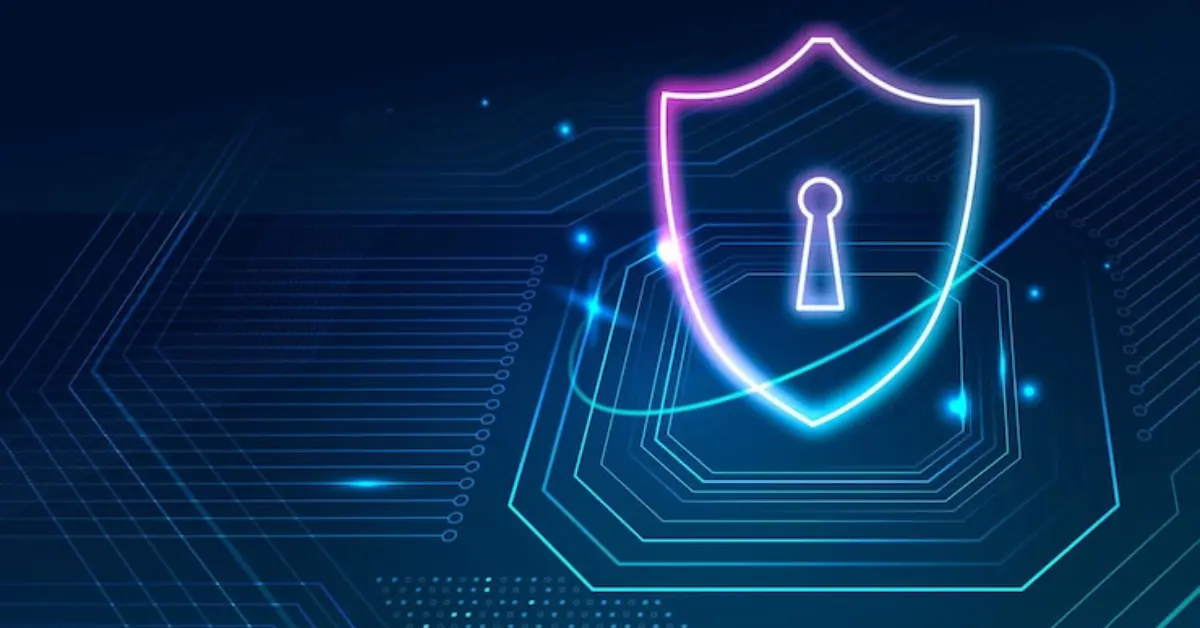Introduction
In the wake of the digital revolution, remote work has become a cornerstone of modern business operations. However, with this shift comes the imperative need for robust cybersecurity measures to protect sensitive information and maintain the integrity of business processes. This article explores the challenges and solutions surrounding cybersecurity in the age of remote work, offering valuable insights for businesses and individuals alike.
The Landscape of Remote Work
In recent years, the landscape of work has undergone a profound transformation, with remote work emerging as a defining feature of the modern professional realm. The traditional office setting has given way to a decentralized model, allowing individuals to contribute to their roles from the comfort of their homes or other remote locations. While this shift has brought about increased flexibility and accessibility, it has also paved the way for a new set of challenges, particularly in the realm of cybersecurity.
1. The Rise of Digital Nomadism: As remote work becomes more prevalent, the concept of the digital nomad has gained popularity. Professionals are no longer tethered to a specific geographical location, opting for a lifestyle that allows them to work from diverse and often unsecured networks. This newfound freedom, while empowering, necessitates a reevaluation of cybersecurity protocols to ensure data integrity and confidentiality.
2. Evolving Communication Technologies: Communication lies at the heart of remote work, and the tools facilitating it are evolving at a rapid pace. Video conferencing, instant messaging, and collaborative platforms have become integral to virtual collaboration. –However, the diverse array of communication channels also presents an expanded surface for potential cyber threats, demanding a comprehensive approach to secure these avenues of interaction.
3. Decentralization of Workforces: Organizations are increasingly embracing geographically dispersed teams, allowing them to tap into global talent pools. This decentralization, while fostering inclusivity, introduces complexities in securing networks, devices, and the flow of information. Companies must adapt to protect their assets and maintain the confidentiality of sensitive data across a distributed workforce.
4. Balancing Productivity with Security: Remote work is often associated with increased productivity, but this comes with a caveat. Striking the right balance between enabling productivity and enforcing robust security measures is a delicate challenge. Implementing solutions that seamlessly integrate into the workflow without compromising data security is paramount for a successful remote work strategy.
5. Internet of Things (IoT) Challenges: The proliferation of IoT devices in home offices introduces additional security concerns. From smart thermostats to connected printers, each device represents a potential entry point for cyber threats. Organizations must extend their cybersecurity focus beyond traditional endpoints to encompass the diverse array of IoT devices that remote workers utilize.
In conclusion, the landscape of remote work is characterized by a dynamic interplay of flexibility, innovation, and potential vulnerabilities. Navigating this digital frontier requires a holistic approach to cybersecurity that addresses the unique challenges posed by decentralized work environments. By embracing technological advancements, fostering a security-conscious culture, and staying vigilant in the face of evolving threats, organizations can ensure that remote work remains a secure and sustainable mode of operation in the modern professional landscape.
Key Cybersecurity Challenges in Remote Work
As the world continues to embrace remote work, the advantages of flexibility and accessibility come hand in hand with a myriad of cybersecurity challenges. The decentralization of the workforce demands a reevaluation of traditional security paradigms, as employees access company networks and sensitive data from various locations and devices. Here are some of the key cybersecurity challenges inherent to the remote work landscape:
1. Endpoint Security: In a remote work scenario, employees often utilize personal devices to access company networks. This diversity of endpoints increases the potential attack surface for cybercriminals. Ensuring the security of each device through robust antivirus software, firewalls, and regular updates becomes crucial to prevent malware and unauthorized access.
2. Secure Communication Channels: The reliance on virtual communication tools such as video conferencing, instant messaging, and email has skyrocketed. However, the encryption of these channels is not always guaranteed. Securing communication platforms is essential to protect sensitive discussions and prevent eavesdropping or data interception by malicious actors.
3. Phishing Attacks: Remote workers are prime targets for phishing attacks, where cybercriminals use deceptive emails or messages to trick individuals into divulging sensitive information. The lack of physical proximity to colleagues and immediate support makes employees more susceptible. Regular training on identifying phishing attempts and simulated exercises can mitigate this risk.
4. Home Network Security: Home networks typically lack the robust security infrastructure of corporate networks. Weak passwords, outdated router firmware, and inadequate encryption can make these networks susceptible to unauthorized access. Encouraging employees to secure their home Wi-Fi networks is essential in maintaining a secure remote work environment.
5. Data Loss Prevention: With sensitive data being accessed and shared remotely, organizations must implement comprehensive data loss prevention measures. Regular data backups, encryption protocols, and monitoring data access and transfer activities help minimize the risk of data breaches and leaks. Addressing these cybersecurity challenges in the remote work landscape requires a multifaceted approach.
Here are some strategies to enhance remote cybersecurity:
1. VPNs (Virtual Private Networks): Implementing VPNs creates a secure, encrypted connection between remote workers and the corporate network. This ensures that data transmitted between the employee and the company’s servers remains confidential and secure.
2. Multi-Factor Authentication (MFA): MFA adds an extra layer of security by requiring users to provide multiple forms of identification before gaining access to systems or data. This significantly enhances security by reducing the likelihood of unauthorized access, even if login credentials are compromised.
3. Regular Security Training: Educating remote employees about cybersecurity best practices, the latest threats, and the importance of maintaining strong password hygiene is critical. Continuous training helps keep the workforce vigilant and proactive against evolving cyber threats.
4. Security Audits and Monitoring: Regularly conducting security audits and monitoring network activities helps identify vulnerabilities and potential threats. Proactive measures can then be implemented to address these issues, bolstering the overall security posture of remote work environments.
5. Collaboration with Cybersecurity Experts: Engaging with cybersecurity experts or outsourcing security services can provide organizations with the expertise needed to stay ahead of cyber threats. Professional guidance ensures that security measures are up-to-date and aligned with the latest industry standards.
In conclusion, understanding and addressing the key cybersecurity challenges in remote work are imperative for maintaining a secure virtual workspace. By implementing robust security measures, educating employees, and staying abreast of evolving threats, organizations can navigate the remote work landscape with confidence and resilience
Effective Cybersecurity Measures for Remote Work
Organizations must adopt comprehensive cybersecurity measures to safeguard their digital assets and maintain the integrity of their operations. Here are key strategies and technologies to ensure robust cybersecurity in the realm of remote work:
1. Virtual Private Networks (VPNs): Implementing a VPN creates a secure, encrypted tunnel for data transmission between remote devices and the corporate network. This ensures that sensitive information remains confidential and protected from potential threats, especially when employees connect to unsecured public Wi-Fi networks.
2. Multi-Factor Authentication (MFA): MFA adds an additional layer of security by requiring users to authenticate their identity through multiple methods, such as passwords, biometrics, or security tokens. This mitigates the risk of unauthorized access, even if login credentials are compromised.
3. Endpoint Protection: Deploying robust endpoint protection solutions is critical to secure the various devices used by remote workers. Antivirus software, firewalls, and endpoint detection and response (EDR) tools help defend against malware, ransomware, and other cyber threats targeting individual devices.
4. Secure Communication Platforms: Utilizing encrypted communication tools is essential for protecting sensitive information during virtual meetings, messaging, and collaboration. Ensure that platforms implement end-to-end encryption to prevent unauthorized access to confidential discussions and shared files.
5. Regular Security Training and Awareness: Educating remote employees on cybersecurity best practices is fundamental to creating a vigilant workforce. Conduct regular training sessions covering topics such as identifying phishing attempts, recognizing social engineering tactics, and emphasizing the importance of strong password management.
6. Data Encryption: Encrypting sensitive data at rest and during transit adds an extra layer of protection. This ensures that even if unauthorized access occurs, the data remains indecipherable without the proper encryption keys.
7. Remote Access Policies: Establishing clear and comprehensive remote access policies helps define the rules and expectations for remote workers. This includes guidelines on device security, network connectivity, and acceptable use of company resources, creating a secure framework for remote operations.
8. Regular Security Audits and Monitoring: Conducting regular security audits and actively monitoring network activities can identify potential vulnerabilities or anomalous behavior. This proactive approach enables organizations to address security issues promptly and fortify their defenses against emerging threats.
9. Collaboration with Cybersecurity Experts: Engaging with cybersecurity experts or partnering with external cybersecurity services provides organizations with specialized knowledge and resources. This collaboration ensures that security measures align with industry best practices and adapt to evolving cyber threats.
10. Cloud Security Measures: If utilizing cloud services, implement robust cloud security measures. This includes configuring access controls, encrypting data stored in the cloud, and regularly auditing and monitoring cloud environments for potential security risks.
In conclusion, a holistic approach to cybersecurity is indispensable for organizations navigating the landscape of remote work. By combining advanced technologies, comprehensive policies, and ongoing education, businesses can fortify their digital perimeters and empower remote teams to work securely and confidently.



